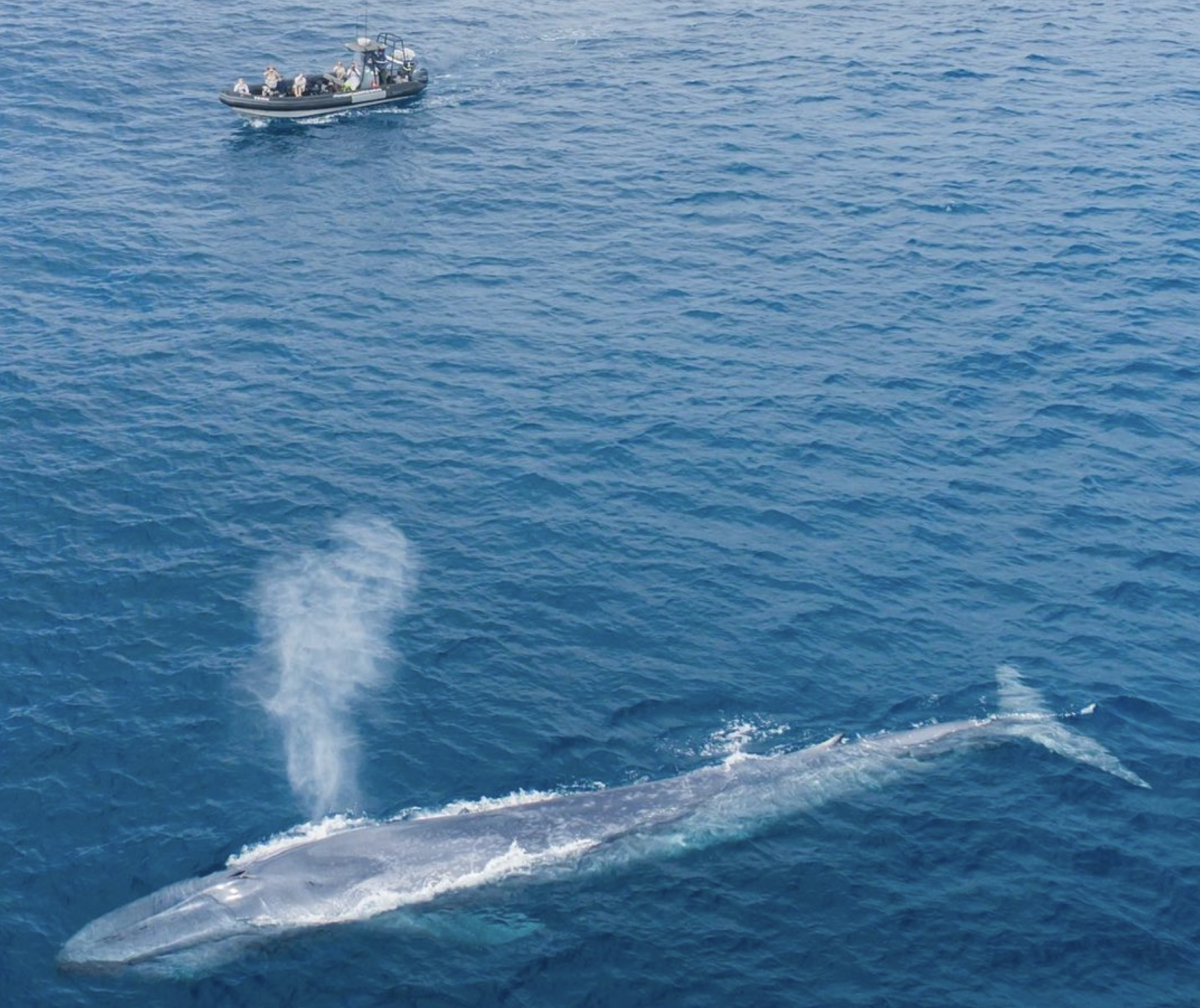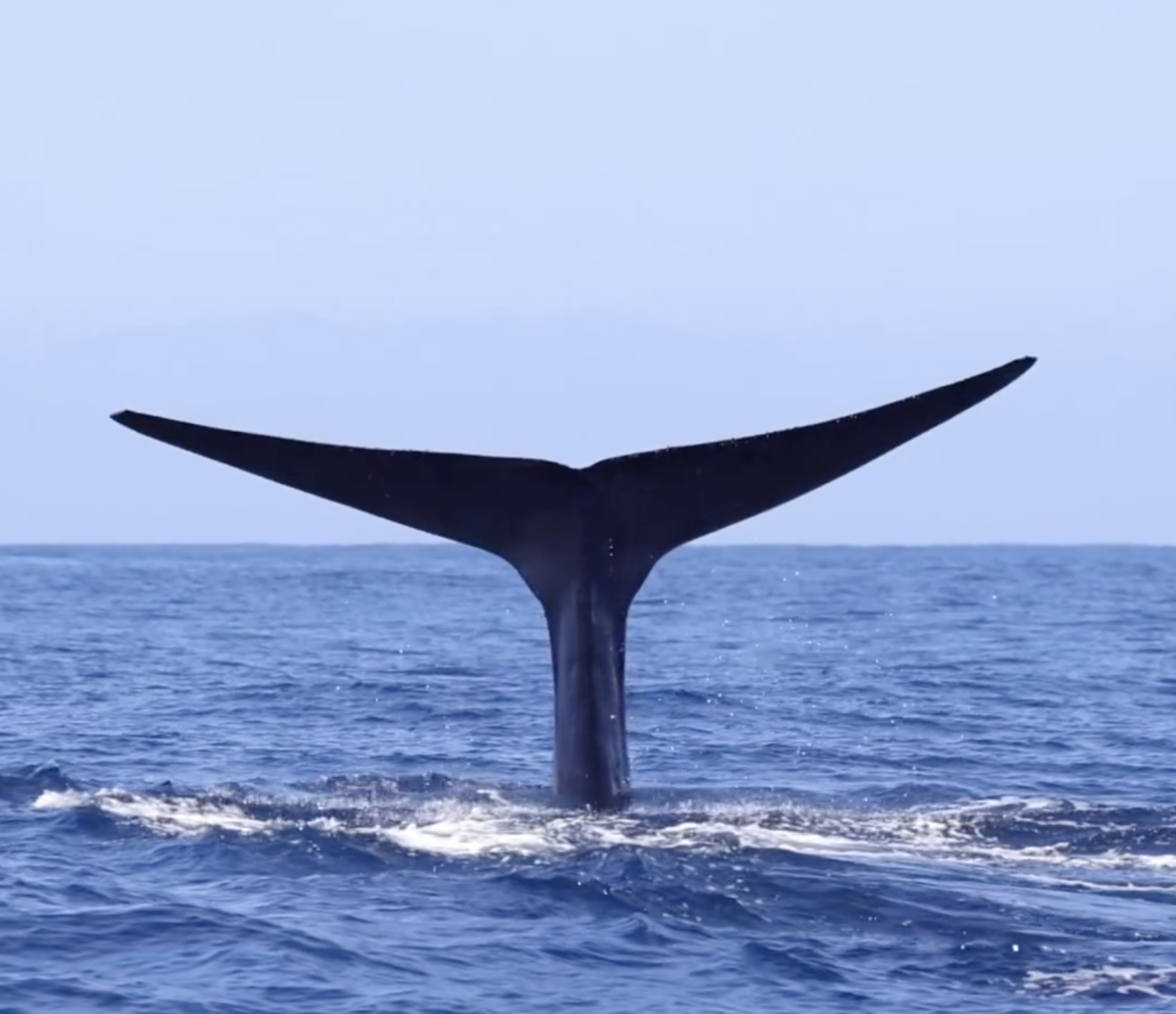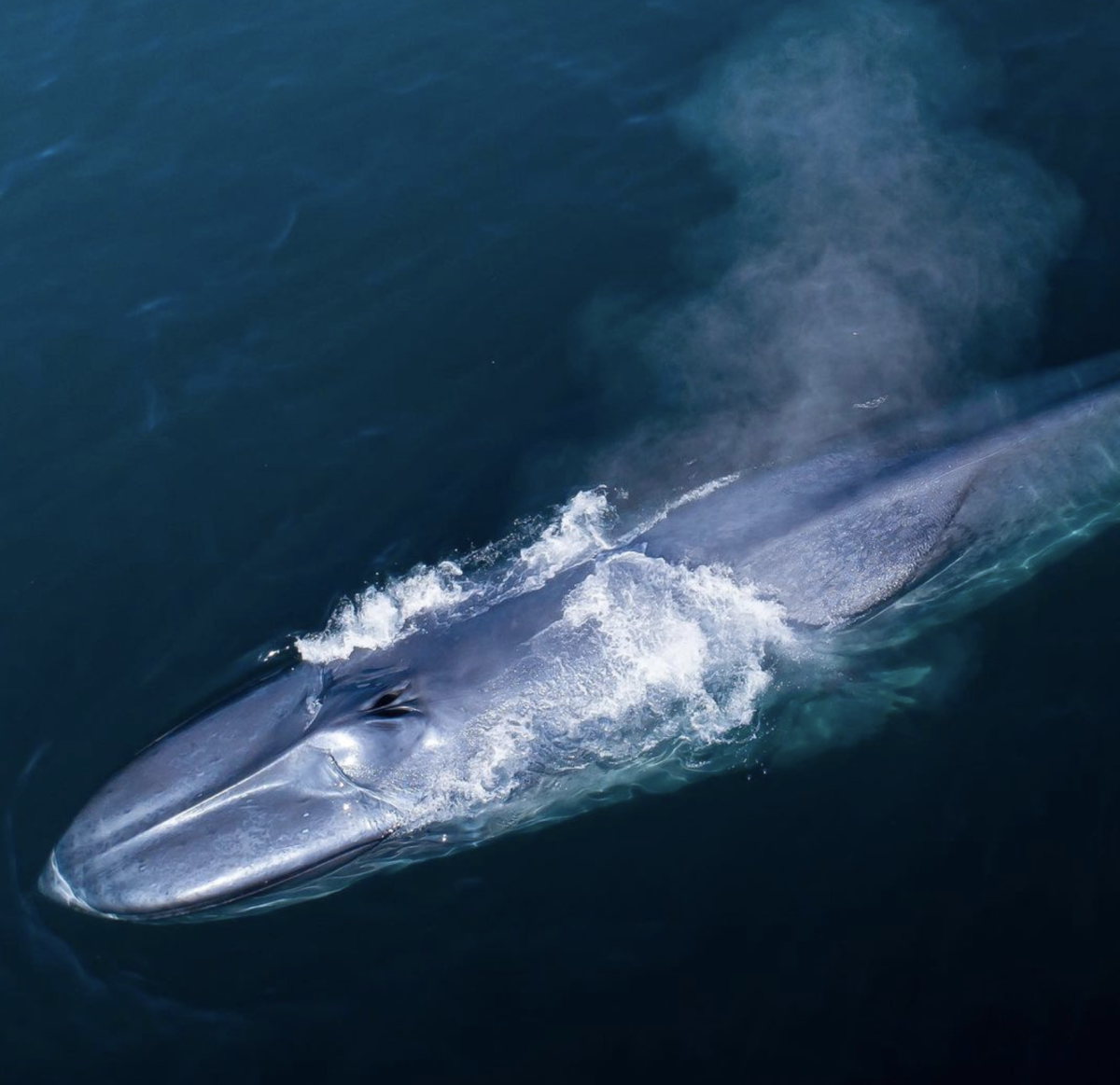
Huntington Beach, located in the heart of Southern California, is one of the best places on Earth to witness the world’s most extraordinary giant – the blue whale! From May through September, lucky whale watchers have the opportunity to encounter blue whales on their epic migration.

Blue whales are the largest animals that have ever lived on our planet, bigger than any dinosaur! Averaging 80-90 feet long, they can stretch to over 100 feet – nearly as long as three school buses in a row! Blue whales are long and slender and their silvery-gray skin glows turquoise blue under the water’s surface when sunlight reflects off it, hence their name “blue” whales. Weighing in at a whopping 300,000 lbs., blue whales must consume a minimum of 6000 lbs. of food every day in order to survive. Interestingly, the largest animals on earth feed almost exclusively on some of the smallest – krill. Tiny shrimp-like animals only an inch long, blue whales can devour over 40 million krill per day.
Blue whales belong to the family of baleen whales, meaning they lack teeth. Instead, they have hundreds of bristly baleen plates hanging from their upper jaw, which they use to filter out food from the water column. Baleen is made of keratin, the same substance our hair and fingernails are made of. The whales’ expandable throat grooves allow them to gulp enormous volumes of water, which they push back out through the baleen, trapping their prey inside like a giant strainer.
The coast of Huntington Beach is an ideal blue whale feeding ground because of the deep-water canyon located close to shore. Within a few miles of the beach, the water depth rapidly drops from a few hundred feet to nearly 2000 feet. This drop-off kickstarts a process called upwelling, where cold, nutrient rich water from the sea floor is carried up to the surface. This starts the food chain beginning with the microscopic plankton all the way to the enormous blue whales.

Seeing a blue whale is an incredibly exciting experience and is something many people traveling to Southern California hope to check off their bucket list. Every encounter is extremely lucky because blue whales were nearly hunted to extinction up until the early 1900s due to commercial whaling. Whales were hunted primarily for the oil in their blubber, which was used to light up lamps and streetlights prior to electricity. They were also used for meat and their bones were even used as building materials.
Currently only 10% of their pre-whaling numbers remain in oceans worldwide and scientists estimate their population at 10,000-25,000 individuals. California has one of the largest concentrations of blue whales in the world with roughly 2000 animals found off our coast. Blue whales are now protected from hunting under the Marine Mammal Protection Act, but they still face several threats. Though they are so large they have no natural predators, blue whales are vulnerable to ship strikes, entanglement in fishing gear, plastic pollution, and climate change.
 Image: @markgirardeau on Instagram
Image: @markgirardeau on Instagram
The best chances of encountering blue whales off the coast of Huntington Beach is throughout May to September. During the winter, blue whales migrate south towards Mexico and central America where they mate and give birth. However, some individuals are known to stay in one area year-round. The best way to spot blue whales is by boat because they are typically found feeding in deep water offshore. Davey’s Locker and Newport Landing Whale Watching in Newport Beach, CA offer multiple daily departures to view these magnificent animals along with many others! Winter/Spring is peak gray whale season as 20,000 whales pass the coast on their annual migration from their Alaskan feeding grounds to their Mexican breeding grounds. Throughout the Summer/Fall, along with blue whales there is an opportunity to view charismatic humpback whales, magnificent fin whales, three species of dolphins, sea lions, and more!
